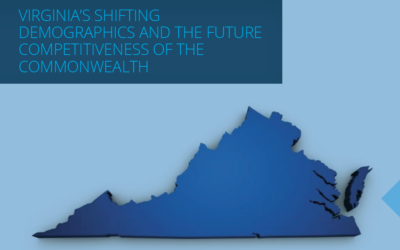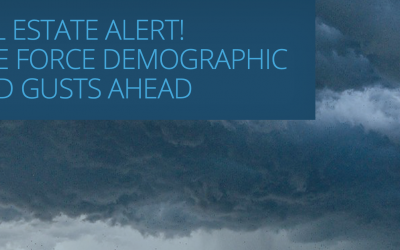CORONAVIRUS VACCINE DISTRIBUTION:
A Race Blind Approach to a Racially Disparate Problem?
Considerable scholarly analysis and media attention has documented the racially disparate impact of coronavirus infections, hospitalizations, and deaths. Constituting 13 percent of the general population, Blacks reportedly account for 25 percent of those that have tested positive and 39 percent of the COVID-related deaths in the United States.
Kenan-Flagler Business School UNC-Chapel Hill
January, 2021
ABSTRACT
Considerable scholarly analysis and media attention has documented the racially disparate impact of coronavirus infections, hospitalizations, and deaths. Constituting 13 percent of the general population, Blacks reportedly account for 25 percent of those that have tested positive and 39 percent of the COVID-related deaths in the United States.
The over-representation of Blacks in rates of coronavirus infection and deaths is even higher in some states and cities. In Michigan, for example, Blacks make up 14 percent of the population but 40 percent of COVID-related deaths. In New Orleans, while making up less than one third of the general population, Blacks “account for almost 60 percent of the COVID-related deaths.”
Yet, we have embraced, in all likelihood unconsciously, a race blind approach to vaccine rollout, focusing primarily on two crucial variables–age and occupation—to prioritize the distribution. Strikingly, we are ignoring the critical impact of systemic racism in vulnerabilities to the deadly virus. In so doing, these race blind vaccine rollouts are not reaching the Black population that has suffered most from COVID.
In the phase one rollout, essential health care workers and adults 75 or older (recently expanded to include those 65 or older) receive priority for vaccinations. This approach would make perfect sense if our society were equitable and just, and always had been. Unfortunately, it is not. This is why there is an urgent need to create a racial equity approach to vaccine rollout.
Coronavirus Vaccine Distribution: A Race Blind Approach to a Racially Disparate Problem
Considerable scholarly analysis and media attention has documented the racially disparate impact of coronavirus infections, hospitalizations, and deaths. Constituting 13 percent of the general population, Blacks reportedly account for 25 percent of those that have tested positive and 39 percent of the COVID-related deaths in the United States.
The over-representation of Blacks in rates of coronavirus infection and deaths is even higher in some states and cities. In Michigan, for example, Blacks make up 14 percent of the population but 40 percent of COVID-related deaths. In New Orleans, while making up less than one third of the general population, Blacks “account for almost 60 percent of the COVID-related deaths.”
Yet, we have embraced, in all likelihood unconsciously, a race blind approach to vaccine rollout, focusing primarily on two crucial variables–age and occupation—to prioritize the distribution. Strikingly, we are ignoring the critical impact of systemic racism in vulnerabilities to the deadly virus. In so doing, these race blind vaccine rollouts are not reaching the Black population that has suffered most from COVID.
In the phase one rollout, essential health care workers and adults 75 or older (recently expanded to include those 65 or older) receive priority for vaccinations. This approach would make perfect sense if our society were equitable and just, and always had been. Unfortunately, it is not. This is why there is an urgent need to create a racial equity approach to vaccine rollout.
The demographic make-up of the U.S. senior population illustrates the nature of the problem with the current roll out strategy. In 2019, Whites made up 76 percent of the nation’s 65 and older population, exceeding their share of the total population (60%). Blacks were less than ten percent of the nation’s senior population, lagging their share of the total population (13%).
There are nearly eight White older adults for every one Black older adult in the U.S., resulting in a major advantage for Whites over Blacks in the current vaccine rollout plan. Unfortunately, this is the reality despite rigorous scientific evidence confirming that coronavirus vulnerabilities vary markedly by race within the U.S. older adult population.
Racial disparities exist in coronavirus infection, hospitalization, and death rates because the impacts of the social determinants of health—the conditions under which we live, work, and play—vary by race. Due to a legacy of discrimination in all walks of life, we know, for example, the poverty rate for African American older adults is more than twice as high as the poverty rate for all older adults and three time as high as the poverty rate for white older adults.
Further, owing to persistently low wages during their prime working years, we know the Black elderly are more likely than their white counterparts to live in sick residential buildings–older deteriorating housing with legacy pollutants like mold, mildew, lead, and radon. They are also more likely to live in hyper-segregated neighborhoods—many proximate to noxious facilities that spew toxic hazards into the natural environment and adversely affect immune systems and overall health of local residents.
In part, as a function of such dangerous living circumstances that often span the entire life course, Blacks are more likely to experience illness and disability earlier and therefore have shorter years of active life expectancy than Whites. Often this state of affairs stems from comorbidities of multiple chronic diseases and early on-set of age-related challenges that constrain or limit a range of activities of daily living and instrumental activities of daily living, including the ability to see, hear, remember, dress, and interact.
In addition, Black older adults are more likely than White older adults to live in multigenerational households, often sharing accommodations with adult biological offspring, grandchildren, and other relatives. Such living arrangements, which also are common among other people of color, heighten the risks of exposure and transmission of the deadly coronavirus.
Available data on vaccine roll out highlight the shortcomings of a race blind approach to the Covid-19 pandemic. Six states—Delaware, Maryland, Mississippi, North Carolina, Tennessee, and Virginia–report Covid-19 vaccination data by race. A recent analysis of the data revealed that, “white people so far have gotten most of the Covid-19 shots” in all six states.
North Carolina reportedly has the widest race and ethnic disparity in vaccinations. According to the state’s COVID-19 vaccine dashboard, North Carolina had vaccinated 109,799 individuals against the deadly virus as of January 8, 2021. Whites received 80% of the vaccinations while Blacks and other people of color received only 20 percent. Using their respective shares of Covid-19 cases as benchmarks, Whites—62 percent of cases—were grossly over-represented while Blacks and other people of color—38 percent of cases—were grossly under-represented in vaccine coverage. North Carolina dashboard data that are more recent indicate that people of color have received only 10 percent of vaccinations in our state.
Moving forward, race–specific aspects of disease vulnerabilities must drive our response to the COVID-19 pandemic. A race-conscious plan must ensure both equitable opportunities of access to care and equitable opportunities to receive the vaccines. Failure to quickly develop and implement such a plan will constitute yet another glaring example of systemic racial inequality—an unacceptable outcome in our increasing diverse society.
About the Authors
James H. Johnson, Jr. is the William Rand Kenan, Jr. Distinguished Professor of Strategy and Entrepreneurship in the Kenan-Flagler Business School and Director of the Urban Investment Strategies Center in the Frank Hawkins Kenan Institute of Private Enterprise at UNC-Chapel Hill.
Jeanne Milliken Bonds is a Professor of the Practice, Impact Investment and Sustainable Finance in the Kenan-Flagler Business School and the Department of Public Policy at UNC-Chapel Hill.
Allan M. Parnell is a Senior Research in the Kenan Institute’s Urban Investment Strategies Center and Vice President of the Mebane, NC-based Cedar Grove Institute for Sustainable Communities.
The Kenan Institute serves as a national center for scholarly research, joint exploration of issues, and course development with the principal theme of preservation, encouragement, and understanding of private enterprise.
Related Articles
North Carolina after the Pandemic: A Model for Creating a Successful Business Ecosystem for All
As a magnet for both population and employment growth, North Carolina has a propitious opportunity to create an inclusive and equitable entrepreneurial and small business ecosystem to support the state’s newfound prosperity. Leveraging qualitative insights from key informant interviews with government officials, community leaders, and minority entrepreneurs in one of the state’s hot spots for growth, we outline the major parameters of a place-based approach to creating an inclusive entrepreneurship and small business ecosystem that generates shared prosperity, eliminating in the process longstanding inequities in community economic development in the state.
Virginia’s Shifting Demographics and the Future Competitiveness of the Commonwealth
A Whole Community Health approach to Virginia’s rapid population growth over the past three decades and demographic challenges.
Real Estate Alert! Gale Force Demographic Wind Gusts Ahead
Newcomers from other states and abroad are principally responsible for North Carolina’s population boom–growth by 3.9 million– since 1990. However, seven powerful demographic disruptors—analogous to gale force wind gusts in an adverse weather event—can potentially quell future growth and demand for residential and commercial real estate. Strategies to circumnavigate the adverse effects of the demographic gale force winds ahead are discussed.








